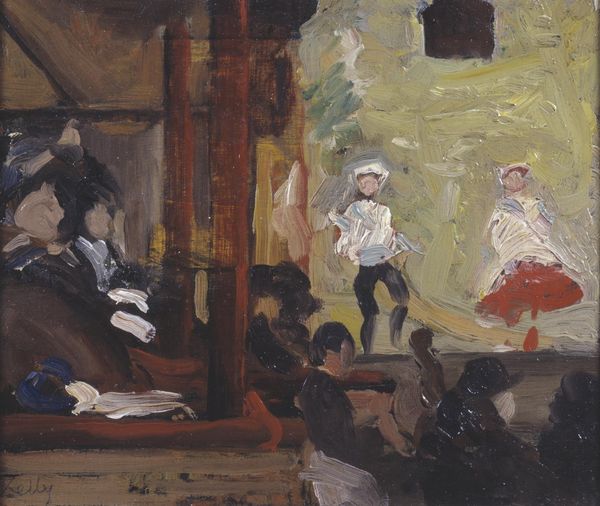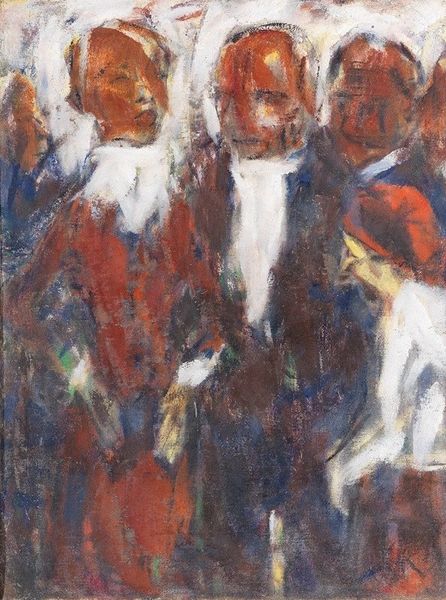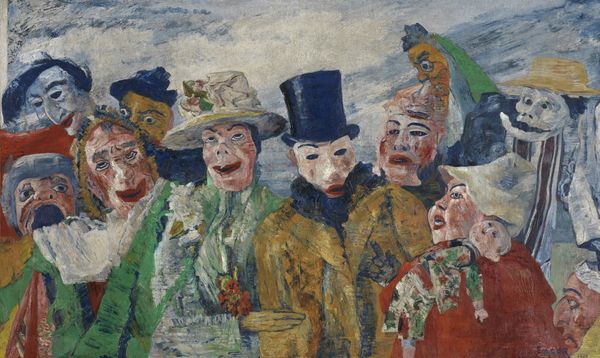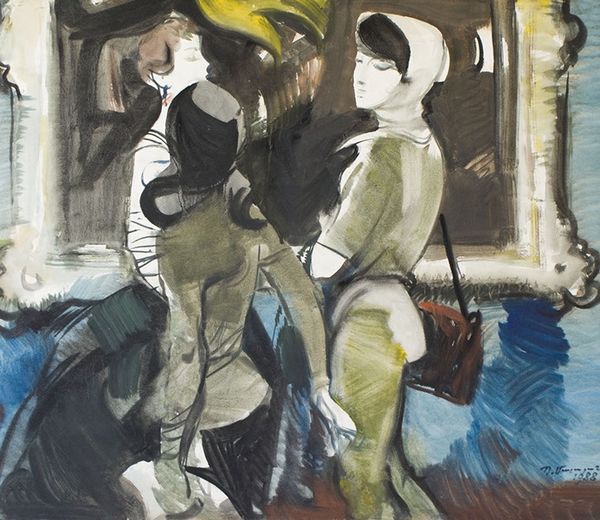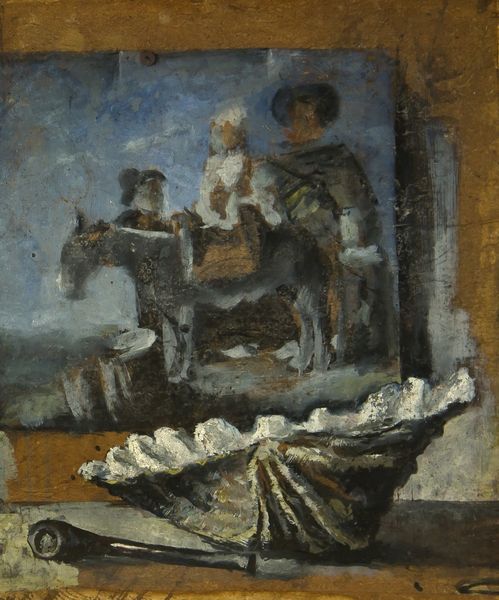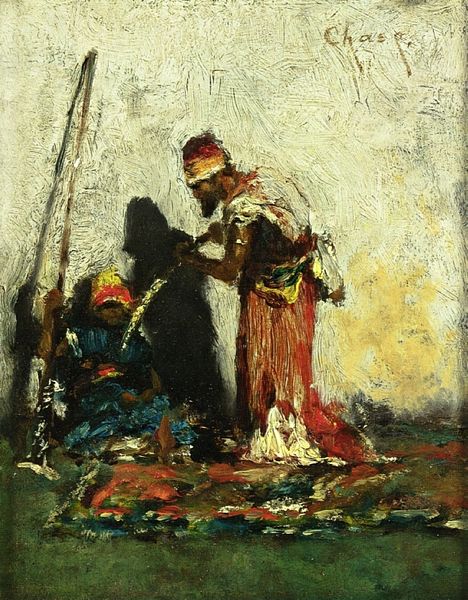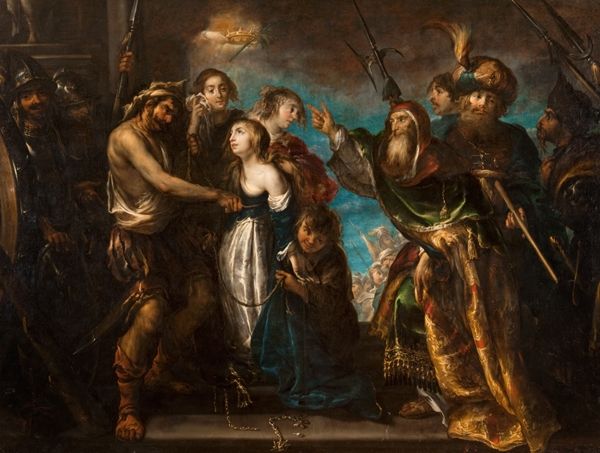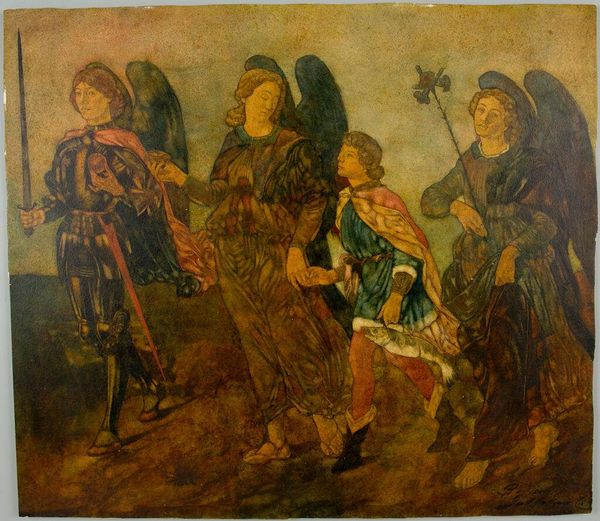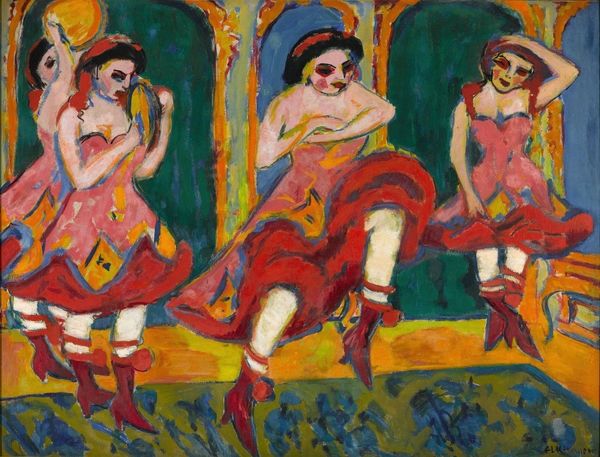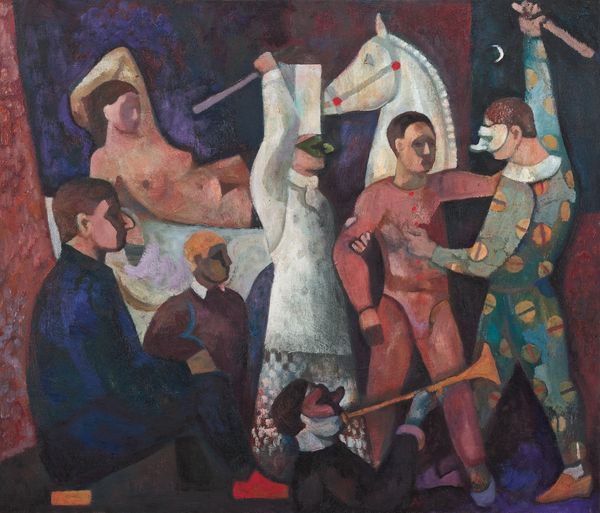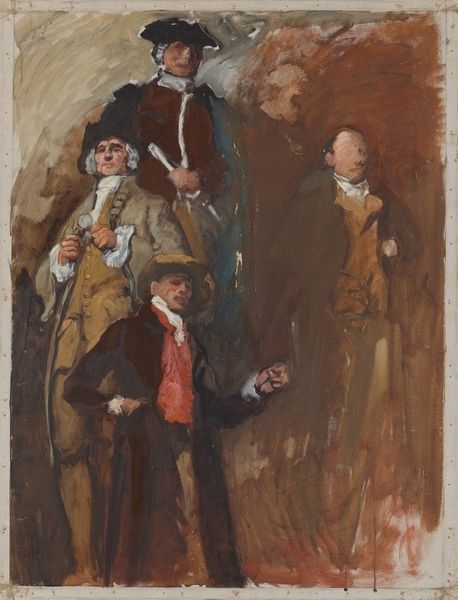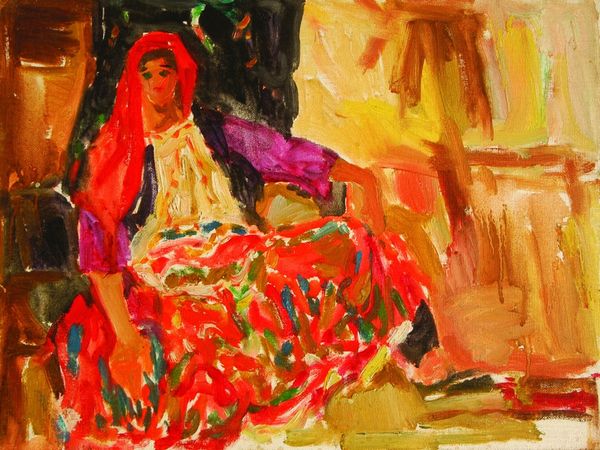
Dimensions: 70 x 50 cm
Copyright: Sami Gattoufi,Fair Use
Curator: Welcome to the Rijksmuseum. We're standing before Sami Gattoufi's 2019 oil painting, "The Art of Becoming a Master." Editor: My immediate impression is a theatrical one; the figures seem caught in a tableau, their expressions weighty, almost mournful. There's a subdued palette overall. Curator: Indeed. Let's delve into the composition. Notice how Gattoufi uses the oil paint to create layers of texture in the costumes, especially that extravagant orange sash and the pristine white ruff. The way the light interacts creates dynamic variation across the plane. Editor: Right, but what does it mean to become a 'master' here? The choice of historical genre painting, the all-male company...I can't help but see it as a commentary on the exclusion within art history, an ironic take on who gets to claim that title. Curator: That is insightful. However, the application of academic art aesthetics provides a unique foundation for analyzing it. Consider the use of linear perspective that firmly positions the group within a three-dimensional space, reinforcing the concepts of order and control. Editor: And is that control really neutral, or does it reflect a certain privilege inherent in the master narrative? The figures in the background lurk with weapons. What statement about power dynamics could we find here? It would be fascinating to examine the possible narratives in that regard. Curator: I concede there are implicit sociopolitical undertones, even given its formal academic features. Editor: For me, those undertones are essential to understanding Gattoufi's purpose. Even the conscious echoes of baroque portraiture underscore how artistic traditions reinforce notions of power. Curator: In its complex interplay of form and implicit content, "The Art of Becoming a Master" invites viewers to ponder upon standards and biases in traditional genre pieces. Editor: Yes. It is an investigation of both artistic legacy and the subtle social implications we as critics must confront.
Comments
No comments
Be the first to comment and join the conversation on the ultimate creative platform.

